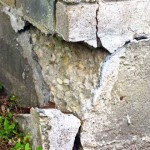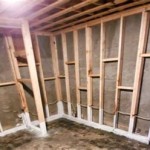How To Clean Out a Basement Floor Drain
A basement floor drain serves as a crucial component in preventing water damage and maintaining a dry and healthy living space. It is designed to collect and redirect water from various sources, including leaks, spills, condensation, and minor flooding events. Over time, these drains can accumulate debris such as hair, dirt, leaves, soap scum, and mineral deposits, leading to clogs that impede their functionality. A clogged floor drain can result in water pooling, unpleasant odors, and even potential mold growth, making regular cleaning and maintenance essential.
This article provides a comprehensive guide on how to effectively clean out a basement floor drain, ensuring its proper function and preventing potential water damage. The process involves identifying the type of clog, gathering the necessary tools and materials, and implementing appropriate cleaning techniques.
Identifying the Type of Clog
Before initiating the cleaning process, it is important to assess the nature of the clog affecting the basement floor drain. Different types of clogs require different approaches. Common types of clogs include:
Simple Surface Clogs: These clogs typically consist of readily visible debris accumulated on the drain surface, such as hair, leaves, or small objects. They usually restrict water flow but can be addressed relatively easily.
Partial Subsurface Clogs: These clogs are located deeper within the drainpipe and impede the flow of water but do not completely obstruct it. Evidence of a partial clog includes slow draining, gurgling sounds, or a lingering foul odor emanating from the drain.
Complete Subsurface Clogs: A complete clog entirely blocks the drainpipe, preventing any water from draining. This usually results in standing water around the drain. These clogs are often caused by significant buildup of debris and may require more intensive cleaning methods.
Examining the drain's condition and observing its draining behavior helps in determining the appropriate cleaning strategy. Attempting to flush the drain with a bucket of water can provide insights into the severity of the clog. If the water drains slowly or not at all, a subsurface clog is likely present.
Gathering the Necessary Tools and Materials
Having the right tools and materials on hand will streamline the cleaning process and ensure a safe and effective outcome. Essential items include:
Gloves: Protective gloves are crucial for shielding hands from potential contaminants and bacteria present in the drain. Rubber or latex gloves are typically suitable.
Eye Protection: Safety glasses or goggles protect the eyes from splashes of water and debris during the cleaning process.
Bucket: A bucket serves to collect water and debris removed from the drain.
Plunger: A standard cup plunger or a flange plunger (designed for toilets) can be used to create suction and dislodge clogs.
Drain Snake (Auger): A drain snake, also known as a plumbing snake or auger, is a flexible tool designed to reach deep into drainpipes and break up or retrieve clogs. Hand-cranked or motorized versions are available.
Wet/Dry Vacuum: A wet/dry vacuum is effective for removing standing water and loose debris from the drain area.
Baking Soda and Vinegar: This combination creates a natural cleaning solution that can dissolve grease and break down some types of clogs.
Boiling Water: Boiling water can help melt grease and dislodge certain types of clogs. Use with caution on PVC pipes.
Enzyme Drain Cleaner: Enzyme drain cleaners contain bacteria that break down organic matter, such as hair and soap scum, without harming pipes.
Screwdriver: A screwdriver might be necessary to remove the drain cover or grate.
Flashlight: A flashlight can provide better visibility inside the drainpipe during the cleaning process.
Implementing Cleaning Techniques
Once the type of clog is identified and the necessary tools are gathered, the cleaning process can begin. The following techniques can be used, starting with the least aggressive and progressing to more intensive methods if necessary:
1. Manual Removal of Surface Debris: This involves physically removing visible debris from the drain surface. Use gloved hands to pick up hair, leaves, or other objects that may be obstructing the drain. A screwdriver may be needed to gently pry up the drain cover to access trapped debris underneath. A flashlight can aid in identifying and removing smaller or less visible obstructions.
2. Plunging: Plunging is effective for dislodging simple clogs. Fill the area around the drain with enough water to cover the cup of the plunger. Position the plunger directly over the drain opening, ensuring a tight seal. Push and pull the plunger vigorously for several minutes, maintaining the seal. Remove the plunger to see if the water drains freely. Repeat the process if necessary.
3. Baking Soda and Vinegar Flush: This natural cleaning solution can help dissolve grease and break down some clogs. Pour one cup of baking soda down the drain, followed by one cup of white vinegar. Allow the mixture to fizz for about 30 minutes. Then, flush the drain with hot water.
4. Boiling Water Flush: Pouring boiling water down the drain can help melt grease and dislodge certain types of clogs. Exercise caution when using this method, especially with PVC pipes, as excessive heat can potentially damage them. Avoid pouring boiling water down drains that have recently been treated with chemical drain cleaners, as this can cause dangerous fumes.
5. Using a Drain Snake (Auger): A drain snake is a flexible tool used to break up or retrieve clogs located deeper within the drainpipe. Insert the drain snake into the drain opening and carefully feed it down the pipe. Rotate the handle of the drain snake to break up the clog or hook onto it. Once the clog is broken up or retrieved, remove the drain snake and flush the drain with water. Repeat the process if necessary.
6. Wet/Dry Vacuum: A wet/dry vacuum can be used to remove standing water and loose debris from the drain area. Position the vacuum hose over the drain opening and use it to suction out any remaining water and debris. This can be particularly effective after using other cleaning methods.
7. Enzyme Drain Cleaner: Enzyme drain cleaners contain bacteria that break down organic matter, such as hair and soap scum. These cleaners are generally safer for pipes than chemical drain cleaners. Follow the manufacturer's instructions when using an enzyme drain cleaner. Typically, the cleaner is poured down the drain and allowed to sit for a specified period before being flushed with water.
Addressing Stubborn Clogs: If the above methods prove ineffective in clearing the clog, it may indicate a more significant problem, such as a root intrusion or a collapsed pipe. In such cases, consulting a professional plumber is recommended. A plumber possesses specialized tools and expertise to diagnose and resolve complex drain issues safely and effectively.
Preventative Measures: After successfully cleaning the basement floor drain, implementing preventative measures can help minimize the occurrence of future clogs. These measures include:
Regular Cleaning: Routinely cleaning the drain, even if no immediate problems are apparent, helps prevent the buildup of debris. A simple rinse with hot water every few weeks can effectively remove minor accumulations.
Using a Drain Screen: A drain screen placed over the drain opening prevents large debris from entering the drainpipe. Regularly cleaning the drain screen itself is also important.
Avoiding the Disposal of Grease and Oil Down the Drain: Grease and oil solidify as they cool, contributing significantly to drain clogs. Dispose of these substances properly in a sealed container rather than pouring them down the drain.
Flushing with Hot Water After Using Soap: Soap scum is a common contributor to drain clogs. Flushing the drain with hot water after using soap helps prevent soap scum from accumulating in the pipe.
Periodic Professional Inspection: Scheduling periodic inspections with a professional plumber can identify potential problems early and prevent costly repairs. A plumber can also perform preventative maintenance, such as hydro jetting, to thoroughly clean the drainpipes.
By understanding the causes of basement floor drain clogs, gathering the appropriate tools, and implementing effective cleaning techniques, homeowners can proactively maintain their drains and prevent potential water damage. Regular cleaning and preventative measures are essential for ensuring the long-term functionality and reliability of the basement floor drain.

How To Unclog A Pipes Using Drain Auger Diy Family Handyman

How To Clean Out Floor Drain In The Basement

How To Unclog A Pipes Using Drain Auger Diy Family Handyman

How To Unclog A Pipes Using Drain Auger Diy Family Handyman

How To Clear A Clogged Floor Drain In Denver

Floor Drain Basics

Floor Drain Basics

How To Unclog A Pipes Using Drain Auger Diy Family Handyman

What You Should Know About The Drain Cleanouts In Your Home

How To Cover Clean Out Drains In Basement Flooring Hometalk
Related Posts







